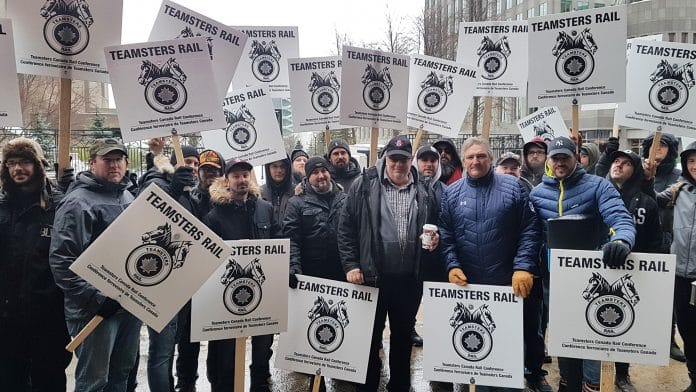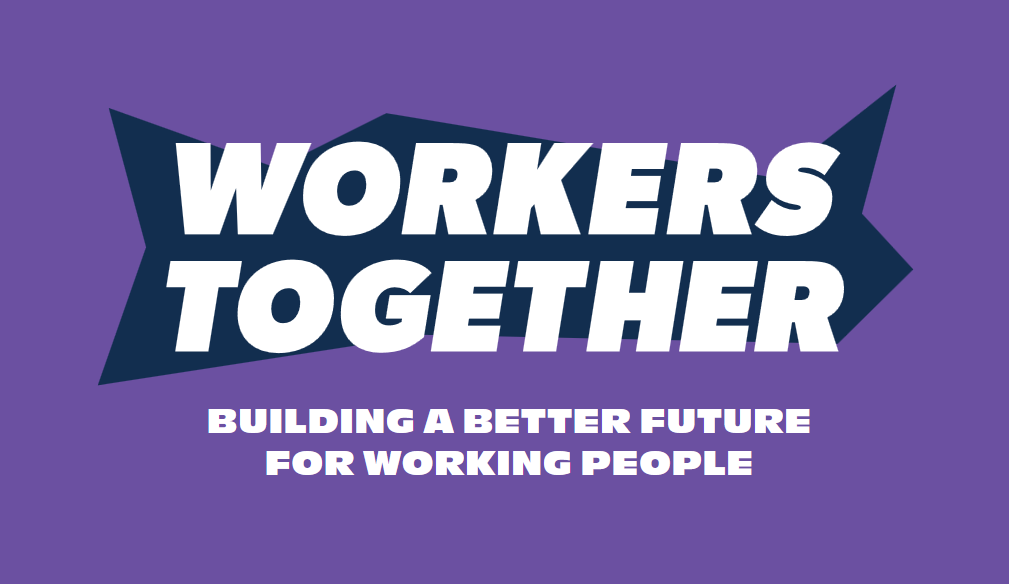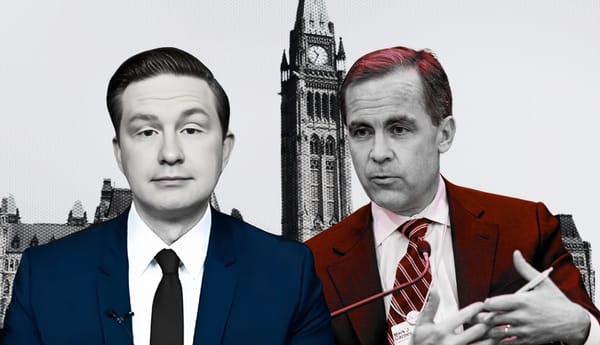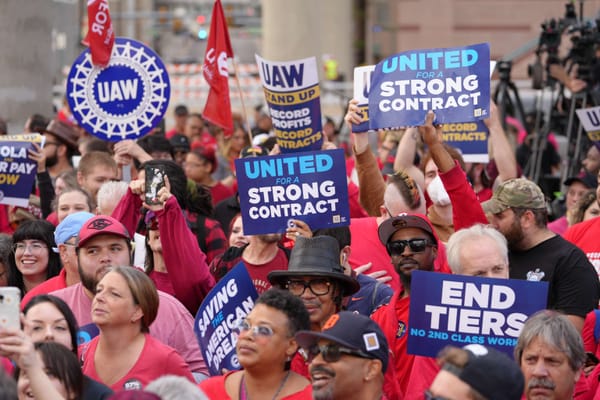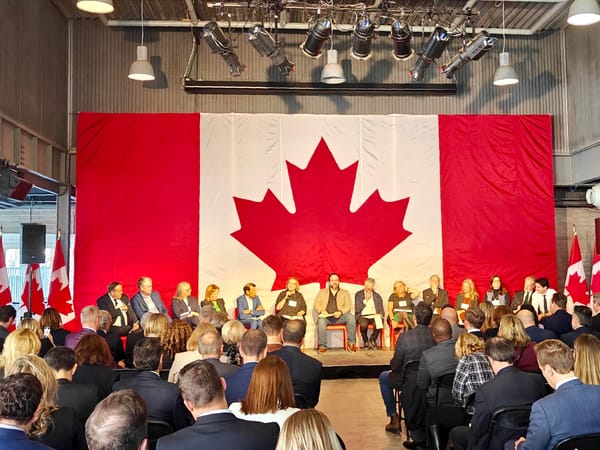
Say what you want about the Liberal Government, but they certainly learn from their prior fumbles, at least when it comes to undermining the right to strike.
Over the past several months, the government has dusted off a rarely used section of the Canada Labour Code (CLC) and sought to pre-empt strikes by airline mechanics and rail workers. Having demonstrated its willingness to push the boundaries of constitutionality, the government will likely continue to face pressure from other federally regulated employers who expect comparable treatment.
Government intervention to end federal strikes is of course old hat. The Liberals in particular are well-versed in the use of back-to-work legislation, having deployed this blunt instrument against striking postal and port workers in the past. However, the current political context demands new and subtler tools.
First, constitutional protection of the right to strike is now widely recognized. This hasn’t stopped governments of all stripes from serially violating this supposedly sacred right, but it does nevertheless force serious legal consideration upon any party contemplating industrial intervention.
Second, the recently nixed supply-and-confidence agreement between the minority Liberals and the NDP limited the government’s range of options for repressing labour. Even with the NDP deal now terminated, provocative attacks on unions are a risky move.
The flip side of that risk is a Conservative Party leader seeking to strike a more worker-friendly posture, regardless of how ridiculous this appears on its face. All of these factors seem to be encouraging the Liberal Party to experiment with new methods of labour repression as of late.
It’s worth reviewing what the Liberals have been up to in detail.
In May, the government attempted to prevent Teamsters rail workers from exercising their right to strike as negotiations with the Canadian National Railway Company (CN) and Canadian Pacific Kansas City Ltd (CPKC) moved closer to impasse.
The Teamsters had been embroiled in a protracted round of negotiations with the companies, seeking to protect hours of work regulations and rest periods.
At that stage in the stalled negotiations between the union and the rail duology, then-Minister of Labour Seamus O’Regan used his powers under the CLC to direct the Canada Industrial Relations Board (CIRB) to “clarify” whether the railways — or some portion thereof — constituted an “essential service,” a designation that in this case would have forced at least some workers to stay on the job and keep the trains operating.
However, the CLC already requires unions and employers to enter into “maintenance of activities” agreements that establish if any portion of their workplace must remain operational to protect public safety during a strike or lockout. The Teamsters and the rail companies had previously agreed that the rails were not an “essential service” according to this criteria.
Nevertheless, O’Regan saw an opening to delay the Teamsters’ strike and introduce an additional bureaucratic hurdle into bargaining. The minister’s directive forced the union into a prolonged CIRB review process, which left the Teamsters waiting for a Labour Board determination before they could plan their next move or issue another strike notice. Of course, the move also signalled to the employers that they could continue to drag their feet in negotiations. For the moment, industrial action was contained, but only temporarily.
In the meantime, the Liberals had other labour fires to put out.
Recall that in late June, airline mechanics struck WestJet and won a 26 per cent wage increase. However, the backstory here was that the federal government had stealthily tried to force the union — the Aircraft Mechanics Fraternal Association (AMFA) — into binding arbitration to end their job action.
This time, O’Regan instructed the CIRB to directly impose binding arbitration to settle all outstanding bargaining issues. The union, however, cleverly argued that the minister’s directive was silent on the status of AMFA’s strike notice, and continued their job action while nominally complying with the direction to begin arbitration. By continuing to strike, AMFA was able to extract a better deal from WestJet.
Out of this episode, it seems the government learned a lesson: using the industrial relations bureaucracy to repress requires attention to detail.
When the CIRB returned its decision finding no essential services on the rails, just as the Teamsters expected, there was no lack of precision in the government’s response.
The rail companies issued lockouts, and the Teamsters hit the picket lines, but only briefly.
On August 22, mere hours into the stoppage, the government demonstrated an impressive degree of creativity and brazenness when the new minister of labour, Steven MacKinnon, intervened to end the strikes. MacKinnon employed the rarely used s. 107 of the Canada Labour Code, which allows wide latitude to do such things that “the Minister deems [...] expedient [...] to maintain or secure industrial peace and to promote conditions favourable to the settlement of industrial disputes or differences.”
Unfortunately, this time the CIRB sided with the labour minister and complied with his direction to force binding arbitration. Having learned its lesson with the airline mechanics’ strike at WestJet, the government secured “industrial peace” by tying the hands of both the Teamsters union and the CIRB.
As the Teamsters put it, “By resorting to binding arbitration, the government has allowed CN and CPKC to sidestep a union determined to protect rail safety. Despite claiming to value and honour the collective bargaining process, the federal government quickly used its authority to suspend it, mere hours after an employer-imposed work stoppage.”
The Teamsters have since predictably appealed the CIRB decision in federal court — a case they have a good chance of winning — but the damage has been done. With rail workers’ right to strike suspended, binding arbitration is set to begin.
The government’s intervention in the rail dispute is especially troubling for a number of reasons.
For starters, this was an employer lockout imposed in an effort to extract concessions that rail workers argue will make both themselves and the broader public less safe.
Larry Hubich, former president of the Saskatchewan Federation of Labour, in fact argues that the rail employers, along with other companies who are members of FETCO (Federally Regulated Employers – Transportation and Communications), were trying to cause enough economic disruption through the lockout to force the government to curtail rail and federal workers’ rights to strike. It seems the government largely obliged.
Second, as Paul Boucher, president of the Teamsters Canada Rail Conference, recognized, “This decision by the CIRB sets a dangerous precedent. It signals to Corporate Canada that large companies need only stop their operations for a few hours, inflict short-term economic pain, and the federal government will step in to break a union. The rights of Canadian workers have been significantly diminished today.”
As predicted, government interference encourages employers across industries to expect the same. During the recent tough round of negotiations between Air Canada and their airline pilots, a chorus of right-wing politicians and business associations called for a repeat of such intervention.
With the pilots’ 10-year contract expired more than a year ago, Air Canada waited until the eleventh hour before tabling an offer satisfactory to the union. As the strike clock ticked down, the company was openly requesting that the government intervene to impose arbitration.
In this case the strike was averted. The Air Line Pilots’ Association, International now has a tentative agreement that members will soon vote on, but don’t think the broader employer push for government intervention will abate so easily, particularly if the next group of workers has less structural power than the pilots at Air Canada.
For example, CUPE-represented flight attendants at Air Canada will negotiate a new contract next year, their first in the post-pandemic economy. These workers will almost certainly be seeking to make up lost ground. If things turn sour, what are the chances that Air Canada will expect a bailout from the federal government in lieu of good faith bargaining in this round?
Last, these series of Liberal interventions were taken without even a semblance of democratic deliberation. Through the use of an obscure section of the CLC, the government excused itself from having to debate its actions in Parliament. As labour law professor David Doorey aptly characterized it, the government instead decided it possesses the right to “quash” strikes simply by sending an email to the CIRB. How long before provincial governments across the country start to look for or pass their own ‘s. 107s’ in order to repress unions that feel emboldened enough to strike?
The irony of all of this is that legally codifying our industrial relations systems was historically designed to regularize workplace conflict, and in the process contain class struggle. In gaining union security, workers gave up the ability to strike at will. On the other hand, this arrangement entailed employers accepting that workers could strike under limited circumstances.
It’s for precisely this reason that the Supreme Court recognized striking as an integral part of the collective bargaining process. If employers know that the government will intervene to bail them out and crush workers who go on strike, they have no meaningful reason to bargain in good faith.
Striking is thus the “powerhouse” of collective bargaining for a reason. Yet the Liberals and bosses they represent would prefer to render workers powerless.
Recent Class Struggle Issues
- September 10 | Attacks On Fred Hahn Are Intended To Divide The Labour Movement
- September 3 | Canadian Autoworkers And The Changing Landscape Of Labour Politics
- August 26 | Should Canadian Governments Really Be Subsidizing Goodyear?
- August 19 | The United Auto Workers Are Taking On Donald Trump And Elon Musk


